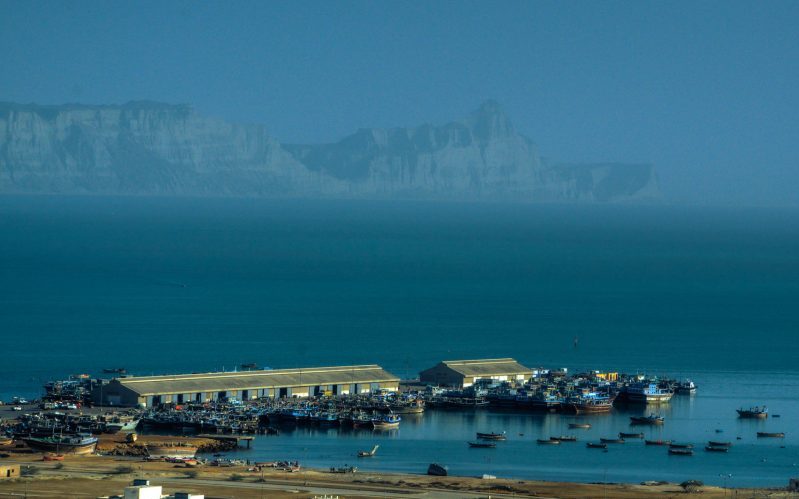On September 29th, the presidential debate between incumbent American president Donald Trump, and wishful Joe Biden, took place. A lot of fighting and disqualifications ensued, but among the very few things that both candidates agreed upon, was that the US has found itself in a position in which it is imperative to take a stronger stance on China. That being said, while they already find themselves in the context of an economic war with China, and with rhetorical attacks between the two superpowers that are seen as common. One day later, on September 30th, a 141-pages long dossier by the name of “China Task Force Report” was released by Republican Congressmen, also urging to recon the Eastern country as a critical point for the US short-term policy. The dossier states more than a hundred recommendations to deal with the Chinese government. Among them, the representatives recommend evaluating if the Chinese Communist Party’s abuses towards the Uyghur minority are strong enough to be considered a genocide — thus triggering international action —, fully imposing sanctions in response to the political repression in Hong Kong, and maybe most important for direct United States’ interests, substituting the US’ supply chain from China, which as of 2018 had a total worth of almost $560 billion US dollars.
During the dossier’s presentation in a press conference that same day, three Republican Representatives made declarations that further consideration. The representative of Louisiana, Steve Scalise, blamed the Chinese government directly as the main culprit for both world-wide and American COVID-19 related deaths, as it did not allow American scientists to enter into Chinese territory with the purpose of studying the virus and to gather scientific knowledge before it actually became a pandemic. The representative of Wyoming, Liz Cheney, emphasized the importance of allowing the US Department of Defense to fund warfare technology development in order to counter China’s military threat, and also added: “We must counter the Chinese Communist Party globally… We are in the midst of a battle between freedom and totalitarianism”. Later on, Michael McCaul, also a Republican Representative for the state of Texas, said: “The Chinese Communist Party is the greatest long-term threat to the interests of the United States of America”. In an interview with Fox News on September 27th, US Secretary of State, Mike Pompeo, seconded what was said by the Texas Representative, literally stating: “The greatest threat that the US faces comes from the Chinese Regime”.
Having such a strong anti-Chinese Communist Party (CCP) sentiment among US high-government officials, and a presidential candidate already acknowledging that China will be a pivotal, albeit uncomfortable part of the United States’ foreign policy, says much about the near-future state of relations between the US and China. With all due likeness, the CCP is fully aware of those declarations and ought to be projecting various future scenarios with differences in grade and consequences. However, a lecture on the current state of global affairs would conclude that it is certain that the US relation with China can only grow more bitter. Thereafter, a confrontation of any sort between the two superpowers is unlikely to develop exclusively in a bilateral dimension. Rather, it would include multiple countries that would be dragged into the affair in one way or another. In fact, one of the aforementioned Representatives, Michael McCaul, remarked the importance of supporting US allies within the region, namely, South Korea, Hong Kong, Taiwan, Malaysia, the Philippines and Vietnam, as he added that they are all under great peril from China. If the Representative’s advice were to be taken into consideration, a heavier presence of the United States would be noted in the form of high-rank diplomatic visits, international cooperation programs, memorandums, or even joint military exercises. This kind of diplomatic paraphernalia would be needed in order to tighten the United States’ relation with South-East Asian countries, as the disruptive and highly volatile foreign policy conducted by US President Donald J. Trump has undermined its country’s credibility in the eyes of the above-mentioned countries.
On the other hand, five countries of South East Asia are involved in the ongoing diplomatic conflict over territorial waters in the South China Sea, so it would not be hard to expect these countries to side with the United States if enough pressure is put into the affair. The Eastern Giant claims sovereignty of the waters, resources and islands inside the so-called Nine-Dash Line (ten, as of 2013), which extends to roughly 2,000 kilometres away from mainland China and overlaps sea-territory claimed by Vietnam, Malaysia, the Philippines, and the entire land territory of Taiwan in the East China Sea. The affair will probably not finish anytime soon because this area is of vital importance for the Chinese government’s interests and goals, even existence (Marshall, T. 2016). And as such, high-government US officials’ declarations to take a more aggressive regional stance backed up by the United States has to be an instant red flag on Beijing’s radar.
The area’s importance is easily understood when looking at its heavy role in international commerce. The South China Sea is the area through which $5.3 trillion US dollars worth of goods cross annually (Catrinel, A. 2017), and the Malacca Strait, which is part of the South China Sea, is where China gets 85% of its imports, including 80% of its energy imports (Zhong, Y. 2016). However, the distribution of the territory and the links with the US to the involved countries in the Nine-Dash Line conflict have become a serious problem for Beijing’s interests, as the Malacca Strait is a chokepoint for China. The strait is only five hundred miles long, with its narrowest point being less than two miles long. In contrast to its small area, the Strait has four different maritime and territorial jurisdictions coexisting at the same time, as Indonesia, Malaysia, Thailand, and Singapore all have a part of its domain (Zhong, Y. 2016). An intelligent approach of the United States with these countries combined with the fear of Chinese expansionism could make a key point of joint action out of the Malacca Strait key to directly attack China’s energetic supply with a blockade if the need to do so ever were to rise.
However, an energy shortage, derived from foreign intervention in the South China Sea, might not be the greatest danger for the Chinese Communist Party (CCP). In this area, much of China’s exports and imports start and finish their voyage, and as such, a naval blockade could greatly impact the overall supply chain for the country and cut the profits coming from commerce — which is the anchor of China. It would be a critical blow to China as a whole, but also for the CCP, because the resulting effects of a weakened domestic market — unemployment, shortages, crime, massive social unrest — could have the dissolution of the incumbent party as their ultimate consequence (Marshall, T. 2016).
Researchers have arrived to the conclusion that Chinese people tolerate the CCP’s authoritarian regime because of two main reasons: a) the government’s willingness to attend its society’s ever-increasing demands — no matter how petty or unreasonable — in the search of legitimacy (Zhou, Y. 2016). And b) constant and significant economic growth (Marshall, T. 2016). On another side, the Confucianist thought tradition that permeates the Chinese psyche might also be an important factor, as its political philosophy aspect suggests that it is the government’s role to conduct a paternalistic role with its people, and it is the people’s obligation to submit to its government, as commoners will seldom know what is good for them (Ni, P. 2014). These factors in sum explain the relatively low internal backlash that the CCP has faced for the last decades. Yet, a fundamental change in the premises, with the government struggling to fulfil its people’s demands, economic growth no longer on the table, and both Western and Eastern antagonism, may result in a revision of the deal between the CCP and Chinese people – one which could imply a change of regime.
Of course, the CCP is fully aware of its heavy dependence on the South China Sea and the potential risks that could derive from a blockade, so it has taken multiple actions in order to lessen this vulnerability. To begin with, China has begun spending more than ever in its naval force, in fact, as of September 2020, the Pentagon acknowledged that China now has the World’s largest navy. It has also tried to lower US influence in the area and increase its own, with the latest instalment being an apparent secret deal between the authoritarian Cambodian government and China to demolish an US constructed naval base the country had been allegedly leased to China for 30 years. However, the biggest bet to guarantee Beijing’s interests has been the One Belt One Road initiative. On paper, it seems like a gigantic effort to build a global infrastructure network to facilitate trade, investment, and better relations between countries in Asia, Europe, the Middle East and Africa, with the ancient Silk Road as the main source of inspiration for the project. A ‘no-strings-attached’ credit policy makes China look even more gracious, as it grants generous infrastructure financing for those countries in serious need of credit, but otherwise could not receive due to many internal problems and a therefore low credit score. The initiative also involves other forms of cooperation, most importantly in the areas of medicine, science and tech, cultural and academic exchange, as well as decentralized international political dialogue (Müller-Markus, 2016).
But of course, countries rarely act with generosity as the only reason for their behaviour. Despite its international cooperation façade, the Belt and Road initiative can be understood in many ways: it can be a massive public relations campaign at its best, but further analysis reveals that it also works as a diplomatic checking account, an elite-capture strategy, and of course, a plan to reduce geoeconomic vulnerability.
Enter Gwadar
On the southwestern coast of Pakistan, there is a small coastal city by the name of Gwadar. For the most part of the last century, it focused on fishing and not much else. Before mid-century, Gwadar was actually under Omani rule, not Pakistani, but when it became known that the town’s coastline was suited to build a deepwater port in 1954, it immediately grabbed the interest of Pakistan’s government, as deepwater ports allow the anchorage of bigger cargo ships, more suited for high-scale commerce. After four years of negotiations, Pakistan finally acquired Gwadar from Oman in a $3 million deal (Anwar, Z. 2011). Karachi saw in Gwadar an enormous potential to become an economic hub, both for its natural gifts, and for its strategic location near the Strait of Hormuz, where some 21 million barrels of oil cross every day. However, an actual port in Gwadar was not finished until 2006, more than 40 years after its acquisition. And even after the completion of the first phase of the project had already finished, its assets remained largely unused by the port’s operator, a company based in Singapore by the name of Port of Singapore Authority.
But in 2013, a Chinese State-run company by the name of China Overseas Port Holdings (COPH) took over Gwadar’s port. This movement confirmed the speculation about China’s interest in adding yet another port to its large list of friendly ports abroad, which as of 2014, already covered 23 ports spread all-along the coasts of the seas, bays, and gulf of Arabia, Bengal, Timor, Corral, Chile, Scotia, and Guinea (Catrinel, A. 2017). It is important to note that, when the Chinese took over, the port had not achieved anything close to the expectations as it still lacks proper infrastructure. Even if it ever were to fulfill them, further investment is needed. But in spite of its underdeveloped state, China gets way more than what it paid for. In fact, the Eastern Giant probably has bought life insurance in the form of a port.
The China-Pakistan Economic Corridor
The China-Pakistan Economic Corridor — in which Gwadar plays a main role — is the hallmark of the relationship between the two Asian countries. It includes a series of Chinese investments in Pakistan to develop much-needed infrastructure for commerce and to gain internal stability in trouble-ridden Pakistan (United States Institute of Peace, 2019). The corridor will connect Kashgar in China to Gwadar in Pakistan through the construction of 3,000 kilometres of roads, whose total completion is expected to take place in 2030 (Bhattacharjee, D. 2015). And while connectivity for commerce is the main focus of the initiative, it also covers other critical areas for Pakistan, for example: the construction of industrial parks and industries, agricultural development, information network infrastructure, energy cooperation, tourism, poverty alleviation, among others (Ibrar, Mi, Rafiq and Ali, 2019).
As part of the One Belt One Road initiative, the China-Pakistan Economic Corridor might be a reliable Plan B when things get ugly for China. Initially, it would be fairly easy to underestimate its value. The China-Pakistan route is only one of six routes in the initiative; it only involves poor Pakistan, while the fifth route planned compromises five manufacturer powerhouses from Indochina. And its worth of US $46 billion might pale in comparison to the grand total of US $575 billion that has been estimated as the total value of the project (World Bank, 2019). Nonetheless, the China-Pakistan corridor might be the strategically most important route for the Eastern country. While the corridor is officially sold as a generous project with international cooperation as its main component and the increase of commerce revenue for both countries as a close second, a more realistic explanation would be the creation of an alternative route for China in the case of an eventual US-led blockade in the South China Sea, which would jeopardize Chinese international commerce, energy supply, and government stability.
Needless to say, a change in commerce routes within China might be a huge endeavor for a country whose Eastern coast had been the focus of politics, culture, industry and exchange for thousands of years, while its internal and Westernmost regions have remained underdeveloped and excluded for the most part (Marshall, T. 2016). Trying to put aside the high-traffic ports of Shanghai, Shenzhen, Hong Kong, and many other successful Chinese Eastern ports in favor of a land route that would go all the way from factories in the East to Xinjiang in the West, and then down to Gwadar through Pakistan, would be utterly unrealistic, neither desired nor expected. However, the Chinese Communist Party does not take chances. Citing once again the Herald’s article on the One Belt One Road initiative, a very important condition of the project would involve making Western China suitable for big-scale commerce, as the four Western provinces of Tibet, Xinjiang, Gansu and Qinghai are all among the poorest provinces in China. These regions — mainly the last three — also play major roles in other two planned routes in the One Belt One Road initiative: the New-Eurasia Land Bridge and China-Central Asia-West Asia. Thus, the development that could be brought by the One Belt One Road initiative would break a thousand years tradition of cold-shouldering Western China by revitalizing its ancient Silk Road Glory. While a fully-functional trade route in Western China might be years, maybe decades away, China is certainly going for it.
Some Last Words
There are many things that are not going very well for China. Neither Joe Biden nor Donald Trump are expected to finish the economic war with China once the next US president takes over in January 2021. The blatant human rights violation crusade that the Chinese Communist Party has undertaken in Xinjiang, Tibet and Hong Kong has antagonized the entire Western bloc. The territorial claims in the South China Sea have created tensions in neighboring countries and undermined an already damaged China’s reputation. However, China might have found itself in a place in which, if it were to dramatically cease its imperialist and authoritarian modus operandi, the consequences could be as bad as if it maintained them. And an even more aggressive approach to foreign policy, even as a bluff, could also have negative results, with war being a real possibility. As Tim Marshall eloquently explains in his 2016 book Prisoners of Geography, pretty much every hardline move that China undertakes has to be understood through the lenses of geopolitics and national (governmental) interest, and not with those of international peace and human rights. Nonetheless, the die has been cast and there is no going back. If China is to avoid the Thucydides trap within the next years, a slight shift towards a more liberal internal policy would appease the West and it would also avoid compromising the regime’s stability. In the international affairs area, Chinese diplomacy would have to make some concessions, mainly regarding foreign territorial claims, but the international community would also have to accept maintaining China’s international rank, political influence, and status as a production powerhouse. If the Chinese Communist Party wants to go in that direction, it would not hurt to keep an ace up its sleeve, just in case – or two, or three. Gwadar will be one of those.
Sources
Asia Times (2020): Cambodia opens the way for Chinese naval presence, https://asiatimes.com/2020/10/cambodia-opens-the-way-for-chinese-naval-presence/, accessed 11.10.2020
ASPI (2013): China’s new map: just another dash?, https://www.aspistrategist.org.au/chinas-new-map-just-another-dash/, accessed 11.10.2020
Business Insider (2020): How the Strait of Hormuz, a narrow stretch of water where ships carry $1.2 billion of oil every day, is at the heart of spiralling tensions with Iran, https://www.businessinsider.com/strait-of-hormuz-explainer-oil-us-iran-tensions-2019-7?r=MX&IR=T#:~:text=The%20narrow%20strait%20is%20the,through%20the%20strait%20every%20day, accessed 11.10.2020
CPIC: WHY GWADAR?, https://www.cpicglobal.com/pakistan-overview/gwadar/, accessed 11.10.2020
CSIS (2019): U.S.–Southeast Asia Trade Relations in an Age of Disruption, https://www.csis.org/analysis/us-southeast-asia-trade-relations-age-disruption, accessed 11.10.2020
GOP Foreign Affairs, House of Representatives(2020): CHINA TASK FORCE REPORT, https://gop-foreignaffairs.house.gov/wp-content/uploads/2020/09/CHINA-TASK-FORCE-REPORT-FINAL-9.30.20.pdf, accessed 11.10.2020
Ibrar, M. et al (2019): China-Pakistan Economic Corridor: Ensuring Pakistan’s Economic Benefits, Khazar Journal of Humanities and Social Sciences Volume 22 No 1 2019, 38-51, https://core.ac.uk/download/pdf/196527368.pdf, accessed 11.10.2020
Marshall, T. (2016): Prisoners of Geography, Volume 1: Ten Maps That Explain Everything about the World, Elliott & Thompson Limited.
Müller-Markus, C. (2016): One Belt, One Road: el sueño chino y su impacto sobre Europa, https://www.cidob.org/publicaciones/, accessed 11.10.2020
New York Times (2013): Chinese Company Will Run Strategic Pakistani Port, https://www.nytimes.com/2013/02/01/world/asia/chinese-firm-will-run-strategic-pakistani-port-at-gwadar.html, accessed 11.10.2020
Office of the United States Trade Representative: The People’s Republic of China, https://ustr.gov/countries-regions/china-mongolia-taiwan/peoples-republic-china#:~:text=U.S.%20imports%20from%20China%20account,and%20plastics%20(%2419%20billion), accessed 11.10.2020
Peimin, N. (2014): The Philosophy of Confucius, https://www.researchgate.net/publication/316100503_The_Philosophy_of_Confucius, accessed 11.10.2020
Popescu, A. (2019): Control of Key Maritime Straits – China’s Global Strategic Objective, International Journal of Economics and Business Administration Volume V, Issue 1, 2017, pp. 92-119, https://www.ijeba.com/dmdocuments/2017/6._POPESCU_1_17.pdf, accessed 11.10.2020
RUTA, M. (2018): Three Opportunities and Three Risks of the Belt and Road Initiative, World Bank Blogs, https://blogs.worldbank.org/trade/three-opportunities-and-three-risks-belt-and-road-initiative, accessed 11.10.2020
South China Morning Post (2016): What’s China’s ‘nine-dash line’ and why has it created so much tension in the South China Sea?, https://www.scmp.com/news/china/diplomacy-defence/article/1988596/whats-chinas-nine-dash-line-and-why-has-it-created-so, accessed 11.10.2020
Sunday Guardian Live (2019): An account of China’s blank cheque diplomacy, https://www.sundayguardianlive.com/news/account-chinas-blank-cheque-diplomacy, accessed 11.10.2020
Trivium China: 40 years of growth: Ranking China’s provinces by GDP per capita, 1978-2017, https://triviumchina.com/data-viz/40-years-of-growth-ranking-chinas-provinces-by-gdp-per-capita-1978-2017/, accessed 11.10.2020
United States Institute of Peace: The Current Situation in Pakistan, https://www.usip.org/sites/default/files/2020-08/the-current-situation-in-pakistan.pdf, accessed 11.10.2020
USNI News (2020): Pentagon Report: China Now Has World’s Largest Navy as Beijing Expands Military Influence, https://news.usni.org/2020/09/01/pentagon-report-china-now-has-worlds-largest-navy-as-beijing-expands-military-influence, accessed 11.10.2020
Zhong, Y. (2016): The Importance of the Malacca Dilemma in the Belt and Road Initiative, Journal of Policy Science, ISSN 1881-6703. vol. 10., pp.85-109, https://core.ac.uk/download/pdf/60551684.pdf, accessed 11.10.2020
Zhou, Y. J. (2016): Authoritarian governance in China, PhD (Doctor of Philosophy) thesis, University of Iowa.
https://doi.org/10.17077/etd.7on1l1qx
VIDEOS
Facebook: US Department of State: The CCP is the greatest threat to peace, https://www.facebook.com/statedept/videos/3106887186105125/, accessed 11.10.2020
Youtube: Fox News (2020): GOP China task force members speak to press, https://www.youtube.com/watch?v=Tu36fdKhVuw, accessed 11.10.2020








Be First to Comment